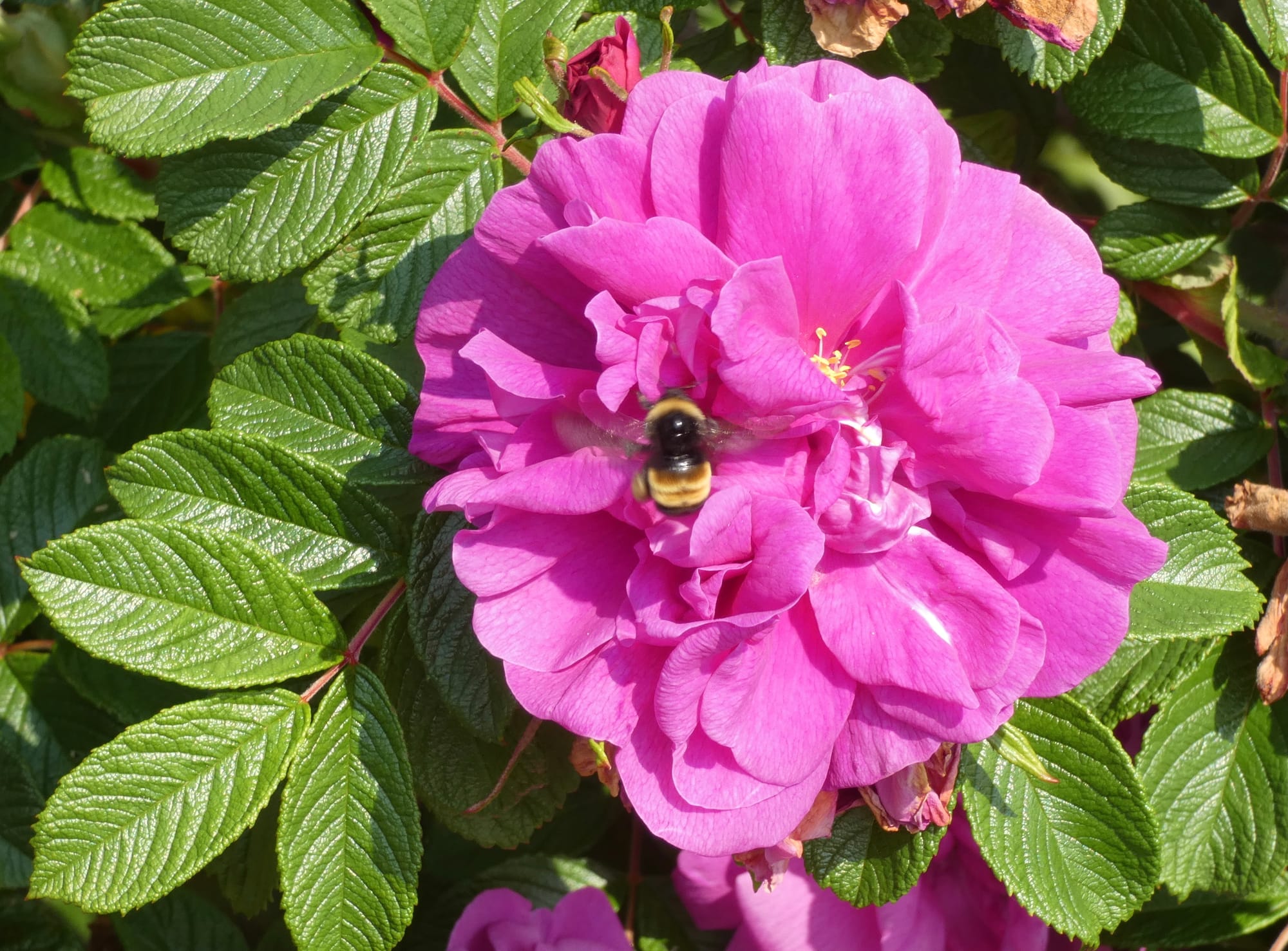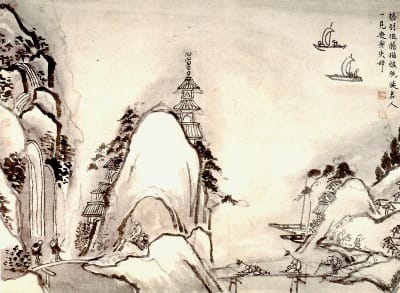Four Big Juicy Factors of the Zen Way
Many practitioners languish in their home practice, tormented by small doubt, due to the difficulty of implementing Zen practice in non-residential settings.

One simple way to understand the approach of the Great Vehicle (Mahayana) toward this life of practice is through what we call the "Four Big Juicy Factors" of the Zen Way: vision, barrier, strategy, and implementation. In this post, we will briefly explore each of these factors and offer some links for those of you interested in taking a deeper dive. We hope this reflection will motivate you to take action – to practice and awaken for the benefit of all beings.
From the beginning, we are perfect and complete, lacking nothing
This is the wonderful vision of the Great Vehicle buddhadharma.
This vision is the basis of Great Faith. Dosho had a taste of this truth at ten-years old while sitting under an apple tree at his family's rural home on a hot summer day, petting his dog, Tippi, when suddenly and powerfully it became perfectly clear that this life, just as it is, is perfect and complete.
Great Faith, though, is not only that all living beings are already buddhas, but also vitally important are these corollaries:
- That many people through the ages – including the buddhas and ancestors – have gone beyond faith in great perfection and realized this truth through the whole body.
- That the buddhas and ancestors were then able to benefit living beings by helping them realize this same truth.
- And that each of us too can go beyond belief and thoroughly awaken.
This truth is covered by our confusion
This is the barrier that is highlighted in Great Vehicle buddhadharma.
As we said, when Dosho was a kid, he had a taste of the vision (like many people), but then the swirl of life – and especially adolescence – was such that the sense of perfection he'd tasted exploded and left him shouting, "What the f--k?!" This is Great Doubt – this one life that had seemed so briefly perfect then seemed to utterly suck.
The Flower Garland Sutra passage quoted above (“Now I see that everywhere all living beings have the wisdom and virtue of the awakened ones [...]") explains,
"[...] but because of delusion and attachment they cannot verify it.”
Is wisdom a great pool or a great fire? If you can tolerate the tension from the inconceivable and not jump to figuring it out via your frontal lobe, you'll feel Great Doubt right here.
And the awareness that all living beings are in this predicament together becomes the ground for Great Compassion. See, for example:

Negotiating the Way
Great Faith in perfection and the Great Doubt that arises from our confusion are like two sticks that we can rub together to generate heat – aka, Great Determination. If buddhas and ancestors have actually awakened to this truth so that they can apply it in the midst of suffering and help others to do such, then so can we.
But how to do it? This leads to the strategies of Great Vehicle buddhadharma. We summarize the path as involving wholehearted zazen, study, and engagement. More about that here:

The Great Master Huineng says this about strategy:
Some readers might wonder, "How could it be that I've been studying the self for years and don't see much improvement?"
One answer is that although many of us recognize perfection, most don't fully appreciate the barrier – our own greed, anger, and ignorance. Most students want to be free of suffering and want to find freedom in a way that is congruent with their desires. In other words, we want to let go of self-clinging our way. And that's an impossible contradiction. This fantasy – that you can let go of self-clinging through more self-clinging – is exactly what must be surrendered in the fire of wholehearted training.
And there is also sticking with it through thick and thin no matter how long the road seems to be. After all, it took the Buddha six years to really break through. It took Yamada Ryoun Roshi six-and-a-half years. For most of us, it takes a lot longer.
Attitudinally, we must drop any remnants of a hostile stance toward greed, anger, and ignorance and instead see them as the grounds for awakening.
So Katagiri Roshi once said in the thick of sesshin:
Where the rubber meets the road
This is about implementation, the fourth of "Four Big Juicy Factors" of the Zen Way. Implementation isn't the poor third cousin of the first three factors, but the culmination of them. The power and constancy of your implementation will depend on the first three.
So it isn't sufficient to have clarity about the vision, to feel the barrier, and understand the strategies for relief. All of that must be implemented in the nitty-gritty down-and-dirty reality of daily life.
For example, many practitioners languish in their home practice, tormented by small doubt due to the difficulty of applying buddhadharma strategies in non-residential settings. If that describes you, the first bit of good news is that you are not alone. The second is that it is certainly possible to accomplish the buddhadharma as a householder. Many have done it in the past and you are not so special or different.
Vine of Obstacles Zen is one program that is designed specifically to support the implementation process. We focus on integrity – following through with commitments. But Viners don't just talk about integrity, they do it.
One way Viners demonstrate integrity is through our Vine Weekly Practice Tracking Spreadsheet. Vine students enter their zazen times and other practice data (meetings with teachers, forum participation, connecting with their study partner, etc) so that it is visible for all Viners to see – just as one's practice would be in residential training. The spreadsheet is both loved and hated by Viners – it's like a "Me-View Looking Glass" that penetrates the self-delusion of what we think we're doing and gives a close-up view of what we're actually doing.
Although our intention for practice and awakening is very important, as one Viner said recently, "It isn't magic." There needs to be embodied follow-through. The rubber needs to meet the road.
We'll give the last word on this post to a neighbor's bumper sticker:

Our gratitude to you paid subscribers for supporting this work!
